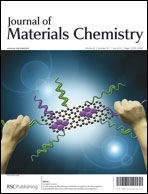The Al–O–C–N system is known as a kind of Al2O3-based ceramic material with various different chemical compositions and structures. Considering its superior physical and mechanical properties, the corresponding one-dimensional Al–O–C–N system may have huge potential applications in future nanodevices. Herein, for the first time, two types of ultralong one-dimensional Al3CON nanostructures, nanowires and bicrystalline nanobelts, were simultaneously synthesized by asimple CVD process. The products were characterized using X-ray diffraction, scanning electron microscopy, transmission electron microscopy as well as energy dispersive X-ray spectrometry. Corresponding property studies were carried out to explore the potential applications of the products. The force measurement based on a single nanostructure was performed by using an atomic force microscope (AFM) and the nanostructure showed high strength with a Young's modulus of 251 GPa. Semiconductor characteristics were also observed by electrical measurement at room temperature, which may be attributed to the doping and/or native defects. In addition, the Al3CON nanostructures showed deep-ultraviolet photoconductivity, in which the conductance increases only when illuminated with 254 nm light rather than 365 nm light.

You have access to this article
 Please wait while we load your content...
Something went wrong. Try again?
Please wait while we load your content...
Something went wrong. Try again?


 Please wait while we load your content...
Please wait while we load your content...